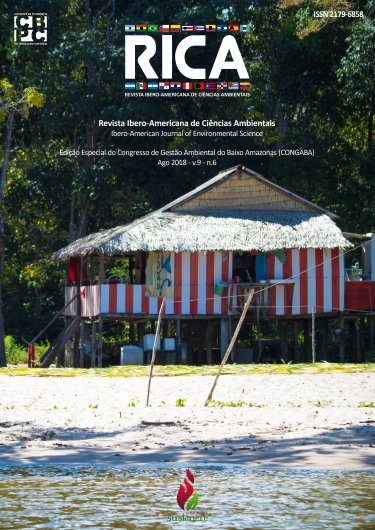Efeito da cobertura de dossel sobre a comunidade de Odonata (insecta) em igarapés na região de Santarém-Belterra (PA)
DOI:
https://doi.org/10.6008/CBPC2179-6858.2018.006.0011Palabras clave:
Anisoptera, Zygoptera, Abundância, Riqueza, DosselResumen
Anthropogenic actions such as the removal of riparian vegetation cause damage to man and nature, the same, when integrated, exerts great positive influence on streams, when removed can cause physical and biotic alterations on the aquatic ecosystems and the individuals that inhabit it. This context was evaluated the effect of the canopy cover on the community of Odonata in the region Santarém-Belterra, Pará, Brazil. For the study, 48 streams were sampled, which for their conservation classifications were applied the Habitat Integrity Index, for biological sampling the courses were measured by a distance of 100 m along its length, subdivided into 20 segments of 5 m each, the adult Odonata were captured by an entomological network for 3 minutes at each follow-up. Through IIH we classified 26 igarapés with altered integrity and 22 preserved. There were collected 1819 insects, 365 of the suborder Anisoptera and 1454 of Zygoptera. The values obtained through linear regression indicated that with the increase of approximately 0.2 of IIH there is a decrease of approximately eight individuals and one species of Anisoptera and increase of approximately seven individuals and one species of Zygoptera. The highest richness of species of Anisoptera occurred in igarapés classified as altered (t = 2,072, p = 0,043), for Zygoptera, this index was higher in igarapés classified as preserved (t = 2,387, p = 0,021). With approximately 10% increase in canopy cover there is a decrease of approximately three individuals and one species of Anisoptera and an increase of approximately two individuals and one species of Zygoptera with the same percentage. The difference in the distribution of individuals of the Odonata order can be explained by their ecophysiological requirements inherent to each suborder. Where riparian vegetation exerts greater influence on species richness. Given the specificity of each suborder, they can be used as bioindicators of habitat quality.
Descargas
Descargas
Publicado
Número
Sección
Licencia
La CBPC - Companhia Brasileira de Produção Científica (CNPJ Brasil: 11.221.422/0001-03) tendrá los derechos materiales de los trabajos publicados. Los derechos se refieren a la publicación del trabajo en cualquier parte del mundo, incluyendo los derechos a las renovaciones, expansiones y diseminaciones de la contribución, así como otros derechos subsidiarios. Todos los trabajos publicados electrónicamente podrán posteriormente ser publicados en colecciones impresas bajo coordinación de esta empresa y / o sus socios. El (los) autores (as) conservan los derechos de autor, pero no están autorizados a publicar la contribución en otra medio, impreso o digital, en portugués o traducción.









